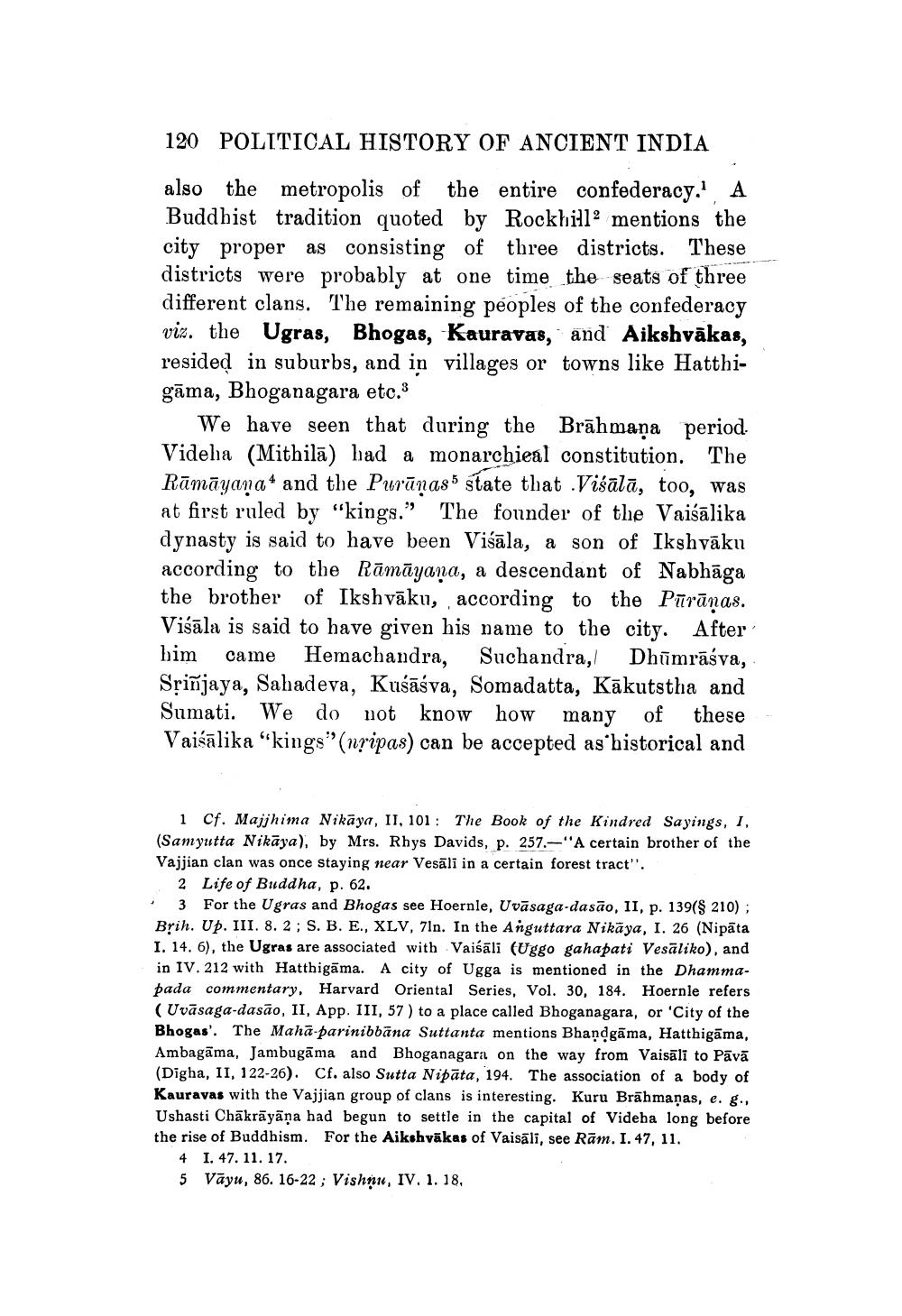________________
120 POLITICAL HISTORY OF ANCIENT INDIA
also the metropolis of the entire confederacy.1 A Buddhist tradition quoted by Rockhill2 mentions the city proper as consisting of three districts. These districts were probably at one time the seats of three different clans. The remaining peoples of the confederacy viz. the Ugras, Bhogas, Kauravas, and Aikshvākas, resided in suburbs, and in villages or towns like Hatthigama, Bhoganagara etc.3
We have seen that during the Brahmana period Videla (Mithila) had a monarchieal constitution. The Rāmāyaṇa and the Puranas state that Visala, too, was at first ruled by "kings." The founder of the Vaiśālika dynasty is said to have been Viśāla, a son of Ikshvāku according to the Rāmāyaṇa, a descendant of Nabhaga the brother of Ikshvāku, according to the Puranas. Visala is said to have given his name to the city. After him came Hemachandra, Suchandra,/ Dhumrāśva, Sriñjaya, Sahadeva, Kuśāśva, Somadatta, Kakutstha and Sumati. We do not know how many of these Vaisalika "kings" (nripas) can be accepted as historical and
1 Cf. Majjhima Nikaya, II, 101: The Book of the Kindred Sayings, 1, (Samyutta Nikaya), by Mrs. Rhys Davids, p. 257.-"A certain brother of the Vajjian clan was once staying near Vesali in a certain forest tract".
2 Life of Buddha, p. 62.
3
For the Ugras and Bhogas see Hoernle, Uvasaga-dasão, II, p. 139(§ 210); Brih. Up. III. 8. 2; S. B. E., XLV, 7ln. In the Anguttara Nikaya, I. 26 (Nipata I. 14. 6), the Ugras are associated with Vaiśāli (Uggo gahapati Vesaliko), and in IV. 212 with Hatthigāma. A city of Ugga is mentioned in the Dhammapada commentary, Harvard Oriental Series, Vol. 30, 184. Hoernle refers (Uvāsaga-dasão, II, App. III, 57) to a place called Bhoganagara, or 'City of the Bhogas'. The Maha-parinibbana Suttanta mentions Bhandgama, Hatthigāma, Ambagama, Jambugāma and Bhoganagara on the way from Vaisali to Pāvā (Digha, II, 122-26). Cf. also Sutta Nipata, 194. The association of a body of Kauravas with the Vajjian group of clans is interesting. Kuru Brahmaņas, e. g., Ushasti Chakrāyaṇa had begun to settle in the capital of Videha long before the rise of Buddhism. For the Aikshvākas of Vaisali, see Ram. I. 47, 11.
4 I. 47. 11. 17.
5 Vayu, 86. 16-22; Vishnu, IV. 1. 18.




